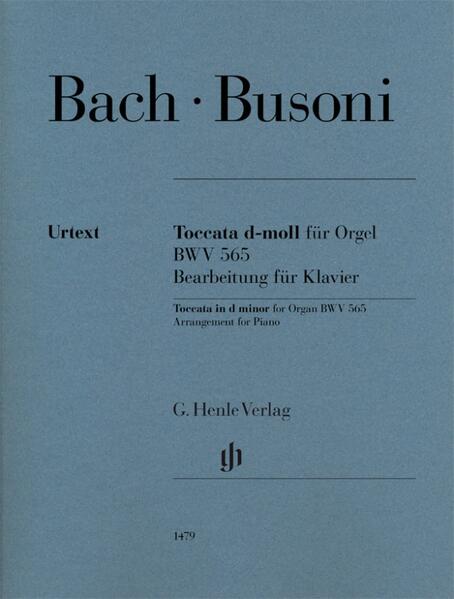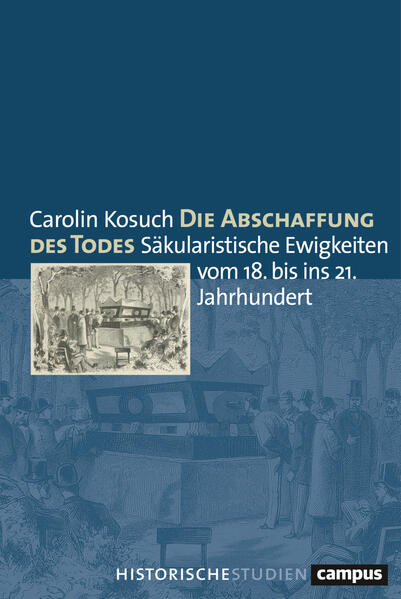
Busoni, Ferruccio - Toccata d minor for Organ BWV 565 (Johann Sebastian Bach)
Instrumentation: Piano solo
| Autor | |
| Quelle | Sonstige Datenquellen |
| ISBN | 9790201814797 |
| Lieferbarkeit | lieferbar |
| Katalogisat | Basiskatalogisat |
| Verlag | Henle, Günter |
| Erscheinungsdatum | 15.10.2020 |
Beschreibung (Langtext)
Bach/Busoni - a pairing that makes pianists’ hearts beat faster. This is because Busoni succeeded in making piano transcriptions of works that Bach had originally tailor-made for another instrument in such a way that one can still sense the original sound world while the grand piano is able to show off its full potential. Together with the C-major Toccata, BWV 564, his transcription of the Organ Toccata in D minor, BWV 565 (now, after some interim uncertainty, once more considered a work by Bach), was to round off his reworkings of Bach for Breitkopf & Härtel in 1900. In Busoni’s view a worthy culmination because the toccatas were indeed - as he informed his publisher - “obviously the best among my achievements of this kind and I am confident in expecting they will make a strong impact”.G. Henle Publishers agrees with this assessment and presents the famous D-minor Toccata and Fugue in an attractive Urtext edition that has consulted all of the sources and offers fingerings by the exceptional pianist Marc-André Hamelin.
Bach/Busoni - cette combinaison fait battre plus vite le cœur des pianistes. Car Busoni parvient même à transcrire pour piano les œuvres de Bach écrites à l’origine sur mesure pour un autre instrument de telle manière que le monde sonore original reste perceptible, sans empêcher le grand piano de concert de faire étalage de tout son potentiel.Sa transcription de la Toccata pour orgue en ré mineur BWV 565 (laquelle, après une période transitoire d’incertitude, est aujourd’hui de nouveau considérée comme une œuvre à part entière de Bach) devait, en 1900, aux côtés de la Toccata en Ut majeur BWV 564, conclure la série de ses arrangements de Bach pour les éditions Breitkopf & Härtel. Selon Busoni, une digne conclusion, car ces Toccatas - ainsi qu’il le fit savoir à son éditeur - «constituent, à l’évidence, le meilleur de ce que j’ai réussi à faire dans ce domaine, et je suis persuadé de pouvoir en promettre une forte impression».Les Éditions G. Henle partagent ce point de vue et présentent la célèbre Toccata et Fugue en ré mineur dans une édition Urtext attrayante, qui prend appui sur l’ensemble des sources et propose des doigtés magnifiquement réalisés par le pianiste d’exception Marc-André Hamelin.
Bach/Busoni - diese Kopplung lässt Pianistenherzen höherschlagen. Denn Busoni gelingt es, auch diejenigen Werke Bachs, die original einem anderen Instrument „auf dem Leib geschrieben“ wurden, so auf das Klavier zu übertragen, dass die ursprüngliche Klangwelt fühlbar wird und gleichzeitig der Konzertflügel sein gesamtes Potential zur Schau stellen darf.Seine Transkription der Orgel-Toccata d-moll BWV 565 (die nach zwischenzeitlicher Unsicherheit heute wieder als tatsächliches Werk Bachs gilt) sollte 1900 zusammen mit der C-dur-Toccata BWV 564 die Reihe seiner für Breitkopf & Härtel entstandenen Bach-Bearbeitungen beschließen. Aus Busonis Sicht ein würdiger Abschluss, waren die Toccaten doch - wie er seinen Verleger wissen ließ - „offenbar das Beste, das mir in dieser Art gelang und ich glaube mir davon eine starke Wirkung versprechen zu können“. Diesem Urteil schließt sich der G. Henle Verlag an und bringt die berühmte d-moll-Toccata und Fuge in einer attraktiven Urtextausgabe heraus, die sämtliche Quellen zu Rate zieht und mit dem Fingersatz des Ausnahmepianisten Marc-André Hamelin aufwarten kann.

